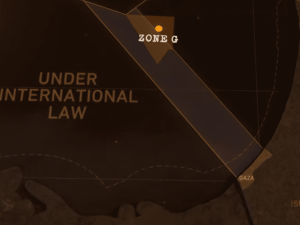For all the media pomp over US secretary of state Antony Blinken visiting Israel to bring about a peace deal, the proposition doesn’t even include a permanent ceasefire.
The so-called ‘peace deal’
In fact, Israel’s government demands that:
- It can continue the genocide after a pause
- It maintains control of key areas of Gaza, including borders
- It maintains Israel’s newly established Netzarim Corridor, which splits Gaza in to Northern and Southern halves
The increased securitisation of Gaza and the isolation of its North from its Southern part could pave the way for an Israeli attempt at colonisation of part of the strip. Prime minister Benjamin Netanyahu has himself stated that Israel is “working on” the “migration” of people in Gaza. And Israel’s national security minister Itamar Ben Gvir has called for “encouraging the migration of the residents of Gaza”.
Israel had settlements and military posts in Gaza until 2005. But the state still maintained its occupation of Gaza, ongoing since 1967, according to an International Court of Justice finding. This is through Israel’s “degree of effective control” in a land, air and sea blockade, along with restrictions on Palestinians in Gaza’s movement, import and export taxes, construction, resources, water, electricity and documents.
In his weekly cabinet meeting, Netanyahu spoke of the ceasefire proposal:
I would like to emphasise we are conducting negotiations and not a scenario in which we just give and give. There are things we can be flexible on and there are things that we cannot be flexible on, which we will insist on.
Therefore, alongside the major efforts we are making to return our hostages, we stand on the principles that we have determined, which are vital for the security of Israel.
Hamas has rejected the new proposal, but pointed to a previous one that included Israel’s complete withdrawal from the Gaza strip as one it accepted.
Israel appears dedicated to expanding, rather than cooperating with Middle East
Israel’s colonial expansionism makes a long-term ceasefire and peace deal difficult. In the occupied West Bank, there are 700,000 illegal Israeli settlers living on seized Palestinian land. This territory is supposed to be part of Palestine under the ‘two state solution’. Under the 1995 Oslo accords, Israel split the West Bank into Areas A, B and C. Area C constitutes 60% of the West Bank and remained – and still does – under full Israeli control.
The majority of Israeli settlers live in Area C, but there are also many in East Jerusalem. The splitting up of the West Bank in order to further colonise part of it is similar to the division of Gaza that Israel is attempting to uphold in the ceasefire deal today.
And in the Golan Heights, which Israel took from Syria in 1967, the state plans to double its settler population there by 2027. That followed the US officially proclaiming that the Golan Heights is part of Israel under Donald Trump in 2019. Still, the majority of the international community considers the annexation illegal.
Featured image via PBS NewsHour – YouTube




